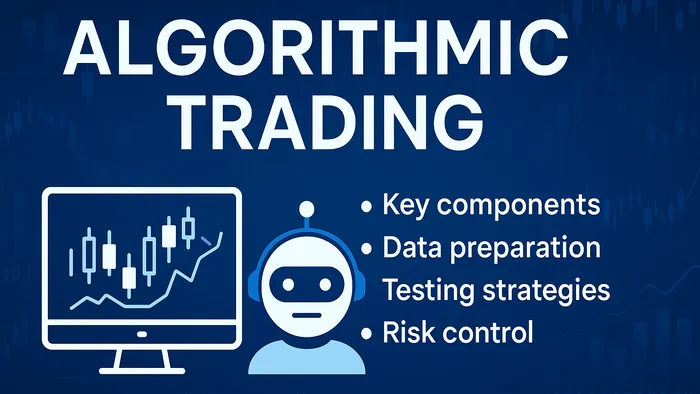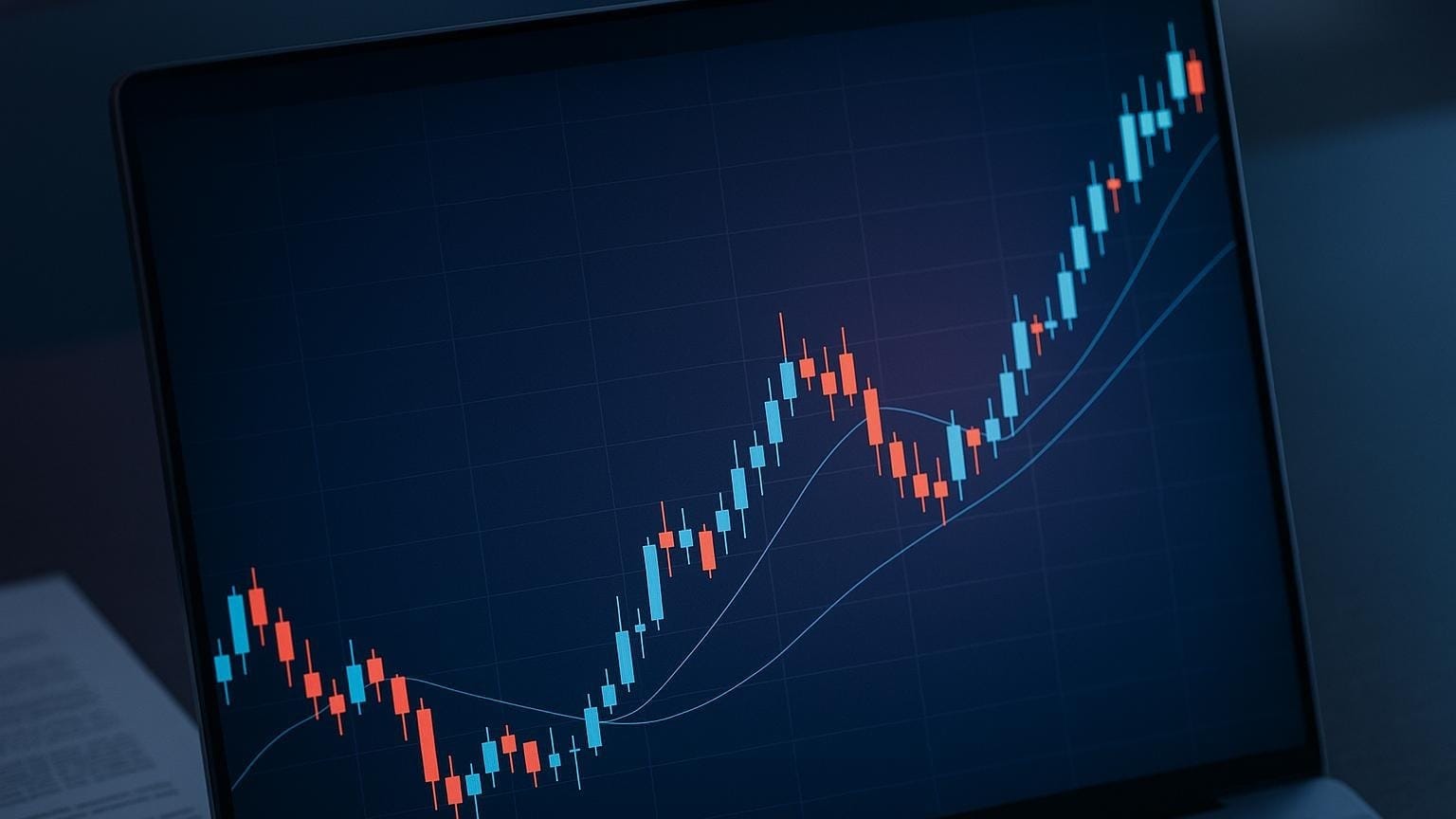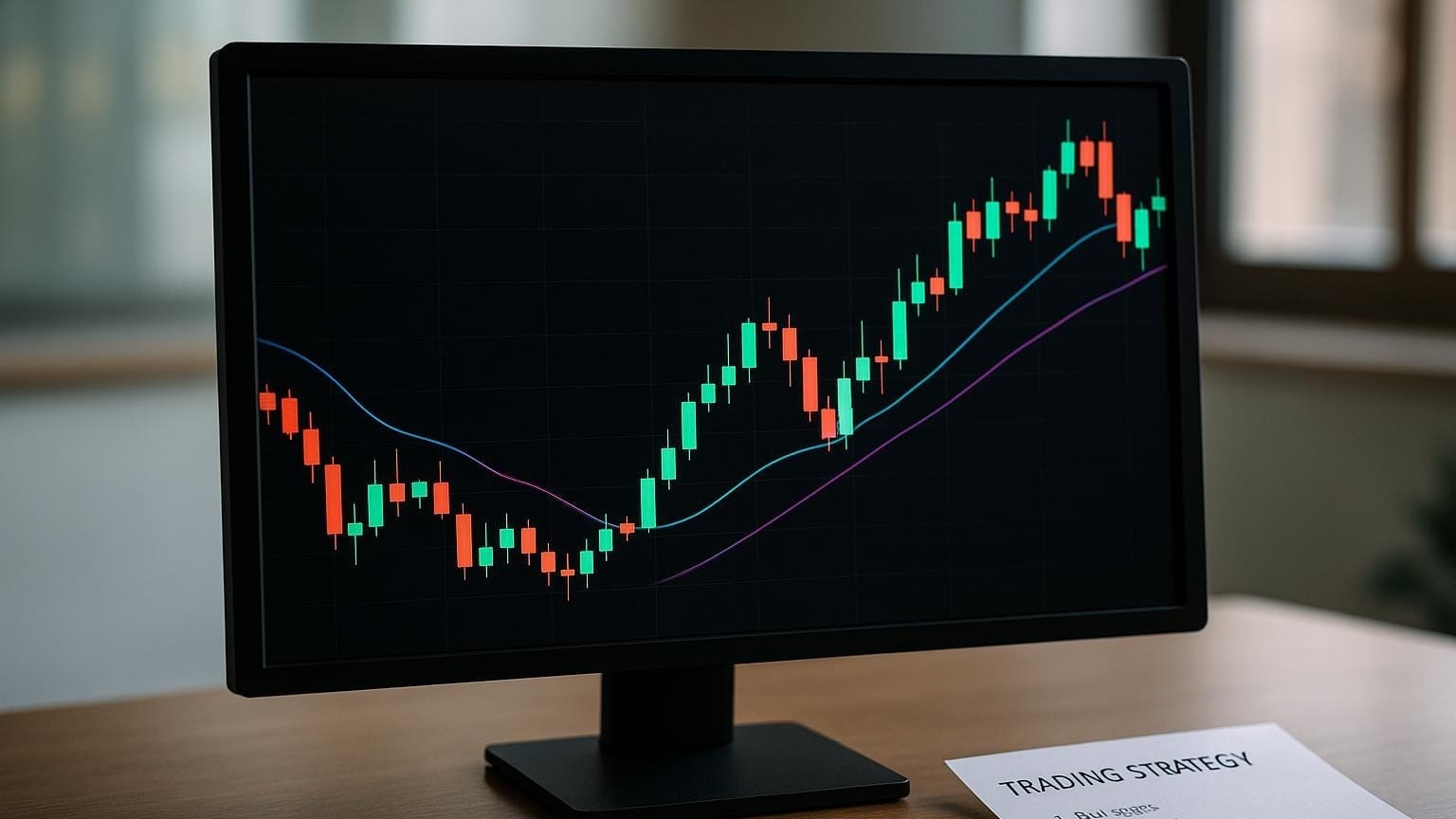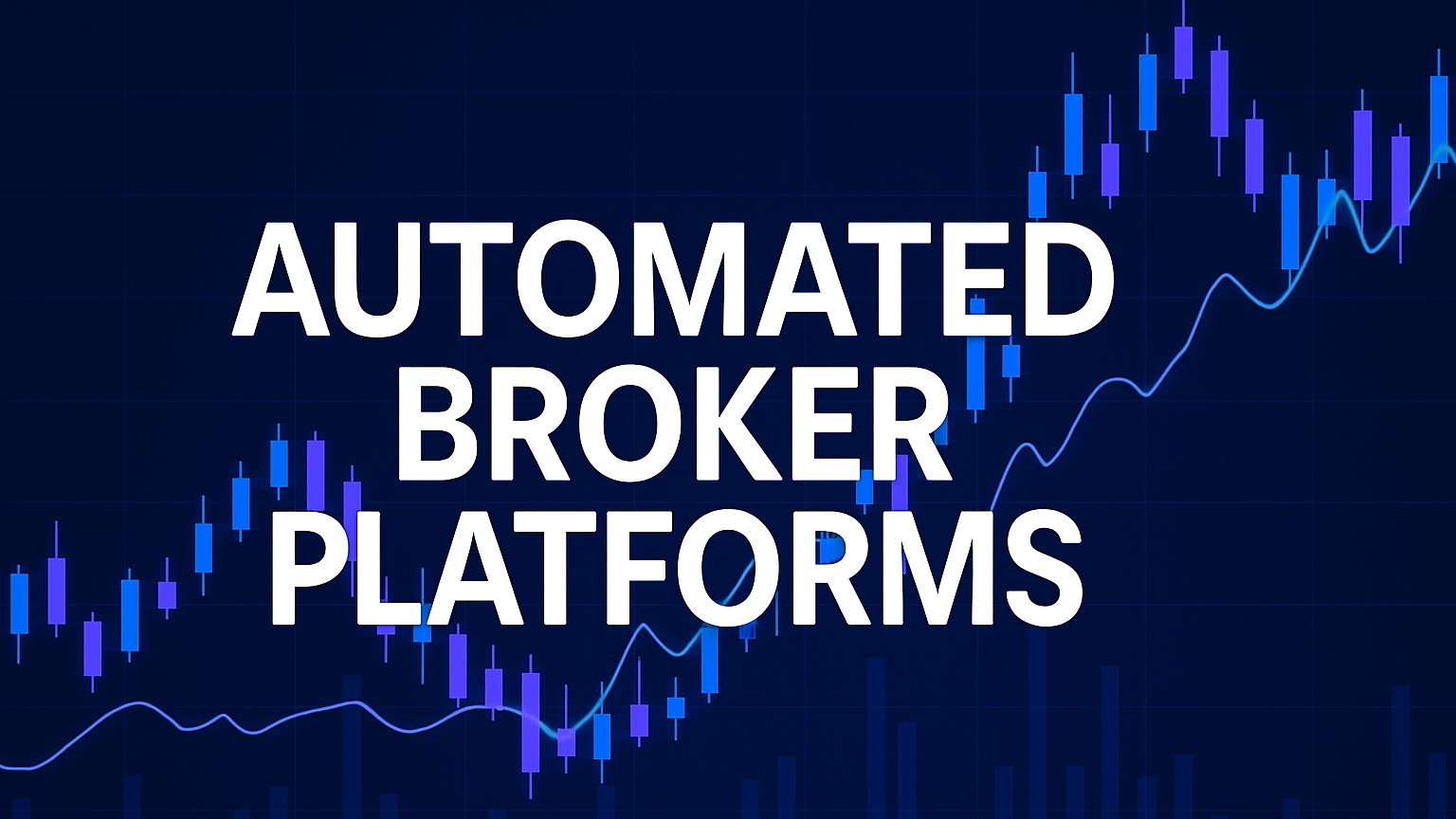Learn essential practices for developing successful algorithmic trading strategies, from data preparation to risk management and performance measurement.
Algorithmic trading automates trades based on data and rules, offering speed, consistency, and emotion-free decisions. Here's what you need to know:
- Key Components: Signal generation, risk management, portfolio tracking, and trade execution.
- Data Preparation: Clean, reliable data is vital. Handle errors, fill gaps, and standardize formats.
- Testing Strategies: Backtest with real-world costs, avoid overfitting, and test across market conditions.
- Risk Control: Use tools like stop-loss orders, position sizing, and metrics like Sharpe Ratio.
- AI Tools: Enhance strategies with AI for better data analysis and adaptability.
Quick Comparison: Manual vs. Algorithmic Trading
| Aspect | Manual Trading | Algorithmic Trading |
|---|---|---|
| Speed | Human reaction time | Executes in milliseconds |
| Emotional Impact | Prone to biases | Free from emotions |
| Data Analysis | Limited capacity | Processes vast data |
| Consistency | Varies significantly | Follows set rules |
| Time Investment | Requires constant focus | Operates 24/7 |
Action Steps
- Start small with demo accounts.
- Use platforms like TradingView or MetaTrader 5 for testing.
- Regularly refine strategies and measure performance.
Algorithmic trading is all about precision, testing, and risk control. Ready to dive in? Keep reading for a deeper breakdown.
Data Analysis Methods
Finding Quality Data Sources
High-quality data is the backbone of successful algorithmic trading. Providers like Tiingo's News API offer extensive market coverage, including over 65,000 equity tickers, 4,000 cryptocurrencies, and 75 currencies, with historical data going back to 1995. Before diving into analysis, ensure you have access to reliable data and focus on proper cleaning and preparation.
When choosing data sources, weigh the following factors:
| Data Source Type | Advantages | Considerations |
|---|---|---|
| Direct Exchange Feeds | Fastest delivery, highly accurate | Expensive, can be complex to integrate |
| Level 1 (L1) Data | Affordable, suitable for basic use | Limited visibility into market depth |
| Full Depth Data | Complete market insights | High cost, requires significant processing |
| Consolidated Feeds | Covers multiple markets | Slight delays in data delivery |
Data Preparation Steps
Cleaning and preparing data is a critical step that directly affects trading strategy outcomes. For example, one major investment bank improved its profitability by 7 percent over two quarters after implementing a thorough data cleaning process. This highlights how proper preparation can make a measurable difference.
Key steps for preparing data include:
- Remove Data Anomalies
Raw data often contains errors or outliers that can distort analysis. Techniques like Z-score calculations or the Interquartile Range (IQR) method are effective for identifying and removing these anomalies. - Handle Missing Data
Missing data points can disrupt your analysis, but there are ways to address this:- Use interpolation for smaller gaps.
- Carry forward the last known value for short-term gaps.
- Apply statistical averages for longer missing periods.
- Standardize Formats
Ensure all data is consistent by adjusting for corporate actions, using a single time zone for timestamps, and normalizing values into standard ranges.
A well-structured data pipeline not only improves performance but also lays the groundwork for creating precise trading indicators.
Creating Trading Indicators
Trading indicators turn raw data into actionable insights. For instance, a moving average crossover strategy on a stock index achieved an 8.5 percent compound annual growth rate over a decade, with a maximum drawdown of 15 percent.
Developing custom indicators involves several phases:
| Development Phase | Actions | Metrics |
|---|---|---|
| Design | Define mathematical formulas clearly | Indicator responsiveness |
| Implementation | Code on platforms like MT5 or TradingView | Execution speed |
| Testing | Backtest using historical data | Win/loss ratio, profit factor |
| Optimization | Fine-tune parameters based on results | CAGR, maximum drawdown |
For example, a quantitative hedge fund outperformed benchmark indices by 3 percent annually through real-time data validation and structured batch cleaning. This demonstrates how rigorous data processes can significantly boost strategy performance.
Algorithmic Trading, Machine Learning, and Quant Strategies
Testing Trading Strategies
After analyzing data and creating indicators, the next step is to rigorously test your strategies to ensure they can perform effectively in actual market conditions.
Core Testing Principles
A well-structured testing process helps assess how strategies perform across different market environments.
| Testing Component | Requirements | Impact |
|---|---|---|
| Historical Data | Multiple market cycles | Covers a variety of conditions |
| Trade Sample Size | At least 100 trades | Ensures statistical reliability |
| Market Conditions | Bull, bear, and sideways markets | Tests performance in all scenarios |
| Transaction Costs | Includes commission, slippage, and spreads | Reflects real trading costs |
Testing Mistakes to Avoid
"It is best to view backtesting as a method for rejecting strategies, than as a method for validating strategies. One thing is for sure, if it doesn't work in a backtest, it won't work in real life".
When testing strategies, avoid these common pitfalls:
- Data Snooping Bias
Repeatedly testing variations on the same dataset can produce misleading results. Over-optimized strategies might excel in backtests but fail in live markets. - Ignoring Transaction Costs
Always account for real-world factors like commissions, bid-ask spreads, slippage, and market impact. These can significantly affect profitability. - Insufficient Sample Size
Testing on too few trades or limited market conditions can lead to unreliable conclusions.
"I've never seen a bad backtest".
By addressing these challenges, you can ensure your testing process delivers more reliable insights.
Testing Software Options
Different platforms offer unique features suited to various trading needs:
| Platform | Key Features | Best For |
|---|---|---|
| TradingView | Pine Script, visual backtesting, community sharing | Technical traders, beginners |
| MetaTrader 5 | MQL5 programming, broad market access, automation | Forex and futures traders |
| LuxAlgo AI Backtesting Assistant | AI-driven strategy creation and optimization across multiple timeframes | Professional algo traders |
MetaTrader attracts over seven million monthly users. High-frequency strategies often require C++ for speed, while Python's libraries are ideal for longer-term approaches. Choose a platform that matches your strategy's complexity and goals.
Strategy Improvement Methods
After initial testing, traders need to refine their strategies for better performance. The algorithmic trading market is anticipated to hit nineteen billion dollars by 2024.

Setting Strategy Rules
Once testing is complete, focus on sharpening your strategy with specific rules. Algorithms now account for over 60 percent of trades exceeding ten million dollars.
| Rule Component | Best Practice | Implementation |
|---|---|---|
| Parameter Limits | Use three to four parameters maximum | Helps avoid overfitting |
| Time Horizons | Test across multiple frames | Confirms strategy consistency |
| Entry/Exit Logic | Base on statistical models | Employ rolling standard deviation |
| Position Sizing | Allocate based on risk | Adjusts with market volatility |
"Most people think of strategy as an event, but that's not the way the world works. When we run into unanticipated opportunities and threats, we have to respond. Sometimes we respond successfully, sometimes we don't. But most strategies develop through this process. More often than not, the strategy that leads to success emerges through a process that's at work 24/7 in almost every industry." – Harvard Business School Professor Clayton Christensen
AI in Trading Strategies
With clear rules in place, AI tools can take strategy performance to the next level. For instance, the LuxAlgo AI Backtesting Assistant offers real-time optimization for multiple timeframes and assets.
- Data Processing: AI identifies subtle market patterns, improving entry and exit points.
- Adaptive Learning: Modern AI platforms continuously update strategies using fresh market data, ensuring they remain effective as conditions evolve.
"By enabling traders to analyze vast amounts of data in real time, and continuously learn and adapt over time, AI is helping to improve decision-making and increase efficiency." – Alpaca Team
While AI can significantly boost performance, it's crucial to remain vigilant against overfitting.
Preventing Strategy Overfit
Overfitting leads to algorithms that perform well in backtests but fail in live trading. To reduce this risk, apply these methods:
| Prevention Method | Purpose | Implementation Guide |
|---|---|---|
| Data Splitting | Validate strategy accuracy | Use eighty percent for training, twenty percent for testing |
| Parameter Reduction | Simplify the model | Focus on key variables |
| Cross-Asset Testing | Ensure broad applicability | Test across various markets |
| Forward Testing | Simulate live conditions | Use walk-forward optimization |
"Overfitting occurs when a trading algorithm is too closely tailored to historical market data, capturing not only the underlying patterns but also the market noise. Such an over-optimized strategy might show stellar backtested results but can perform poorly in live trading." – Nomad
Using rolling standard deviation to create dynamic parameters can help your strategy stay flexible and avoid overfitting to specific market conditions. This ensures your approach remains adaptable and effective.
AI in Trading Strategies
With clear rules in place, AI tools can take strategy performance to the next level. For instance, the LuxAlgo AI Backtesting Assistant offers real-time optimization for multiple timeframes and assets.
- Data Processing: AI identifies subtle market patterns, improving entry and exit points.
- Adaptive Learning: Modern AI platforms continuously update strategies using fresh market data, ensuring they remain effective as conditions evolve.
"By enabling traders to analyze vast amounts of data in real time, and continuously learn and adapt over time, AI is helping to improve decision-making and increase efficiency." – Alpaca Team
While AI can significantly boost performance, it's crucial to remain vigilant against overfitting.
Preventing Strategy Overfit
Overfitting leads to algorithms that perform well in backtests but fail in live trading. To reduce this risk, apply these methods:
| Prevention Method | Purpose | Implementation Guide |
|---|---|---|
| Data Splitting | Validate strategy accuracy | Use eighty percent for training, twenty percent for testing |
| Parameter Reduction | Simplify the model | Focus on key variables |
| Cross-Asset Testing | Ensure broad applicability | Test across various markets |
| Forward Testing | Simulate live conditions | Use walk-forward optimization |
"Overfitting occurs when a trading algorithm is too closely tailored to historical market data, capturing not only the underlying patterns but also the market noise. Such an over-optimized strategy might show stellar backtested results but can perform poorly in live trading." – Nomad
Using rolling standard deviation to create dynamic parameters can help your strategy stay flexible and avoid overfitting to specific market conditions. This ensures your approach remains adaptable and effective.
Risk Control and Results
Managing risk is a critical step in achieving consistent success in algorithmic trading. Once strategies are tested and refined, effective risk control becomes the foundation for long-term sustainability.
Risk Measurement Tools
Modern trading platforms offer tools to help traders monitor and manage risk. Key metrics include:
- Maximum Drawdown: Tracks the largest drop from a peak, highlighting significant losses.
- Sharpe Ratio: Measures returns adjusted for risk.
- Risk Matrix: A visual framework to assess risks based on potential impact and likelihood.
- Decision Trees: Maps out possible outcomes to guide decisions based on risk.
"Algorithmic trading attempts to strip emotions out of trades, ensures the most efficient execution of a trade, places orders instantaneously, and may lower trading fees." – Investopedia
These tools allow traders to set up clear, measurable risk controls tailored to their strategies.
Adding Risk Limits
Setting defined risk limits is essential to safeguarding capital during unexpected market shifts. This involves clear rules for position sizing and stop-loss levels.
For example, with a five-thousand-dollar account and a one-percent risk rule (risking fifty dollars per trade), a trade size is calculated as:
($5,000 × 0.01) / 0.05 = $1,000.
| Control Method | Implementation | Benefit |
|---|---|---|
| Stop-Loss Orders | Placed at points where the strategy becomes invalid | Limits potential losses |
| Position Sizing | Use the one-percent rule to determine trade size | Protects trading capital |
"Position sizing is a technique that determines how many units you should trade to achieve your desired level of risk. And this is the closest thing you can get to the 'holy grail'." – Rayner Teo
Measuring Strategy Success
Tracking performance is just as important as managing risk. Successful traders evaluate both financial metrics, like profit and revenue, and risk metrics, like drawdown and volatility. Real-time dashboards with key performance indicators make this process more efficient. Research shows that high-performing trading operations are fifty percent more likely to use three or more metrics to measure performance.
Tools like the LuxAlgo AI Backtesting Assistant simplify this process by automating the tracking of metrics and optimizing strategies across multiple timeframes. Regular reviews of past performance against benchmarks ensure strategies stay aligned with risk controls, helping traders maintain effective and resilient approaches.
Summary and Action Steps
Key Takeaways
Creating effective algorithmic trading strategies involves careful planning, technical skills, and disciplined execution. Success hinges on thorough data analysis, backtesting, and managing risks effectively.
| Phase | Activities and Tools |
|---|---|
| Planning | Define strategy goals, set risk limits, document details |
| Development | Perform data analysis, implement using Python or C++ |
| Testing | Use backtesting tools, validate across timeframes |
| Implementation | Apply risk controls, manage positions, monitor systems |
To simplify these processes, LuxAlgo provides integrated technical-analysis toolkits on TradingView alongside an AI Backtesting platform for strategy creation and optimization.
Leveraging LuxAlgo Tools
LuxAlgo offers a streamlined approach to building and optimizing trading strategies. Its AI Backtesting Assistant is designed to fine-tune strategies for various timeframes and asset classes.
The Ultimate Plan ($59.99 per month) includes features such as:
- Advanced tools for price action analysis
- Real-time detection of divergences
- Automated pattern recognition
- Optimization engines for signal settings
"Lux Algo has really stepped my trading up, there is a setup for any style of trading you prefer which is very nice you don't have to put yourself in a box metaphorically speaking." – Kevin Ortega
Actionable Steps
- Start with a small amount of capital to test strategies.
- Validate performance using demo accounts.
- Keep detailed documentation of trading rules and parameters.
- Track and analyze performance daily.
For long-term success, staying educated and adaptable is crucial. As QuantifiedStrategies.com notes, constant learning, improvement, and mentorship are key to mastering this art. Engage with trading communities, participate in discussions, and keep refining your algorithms.








